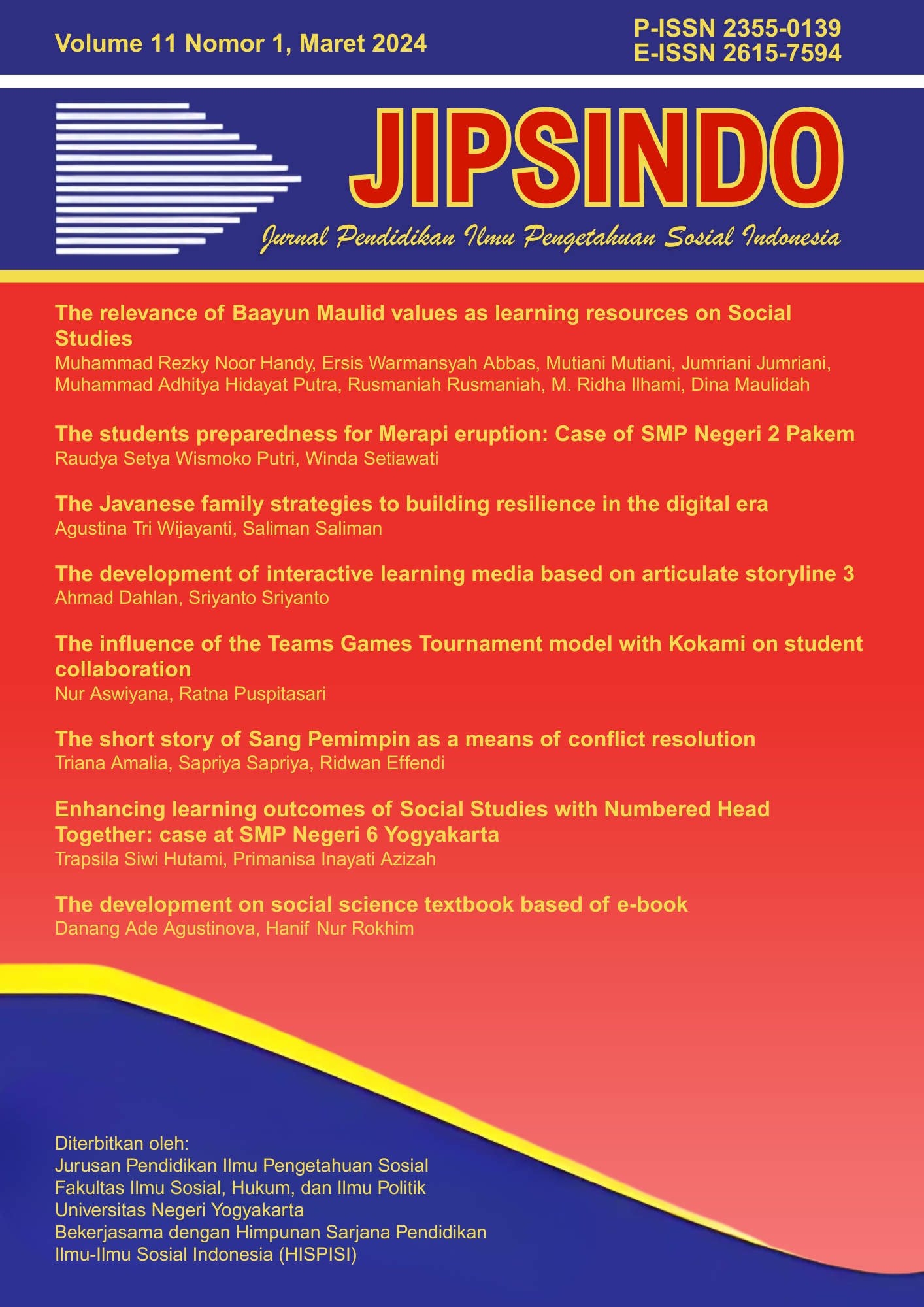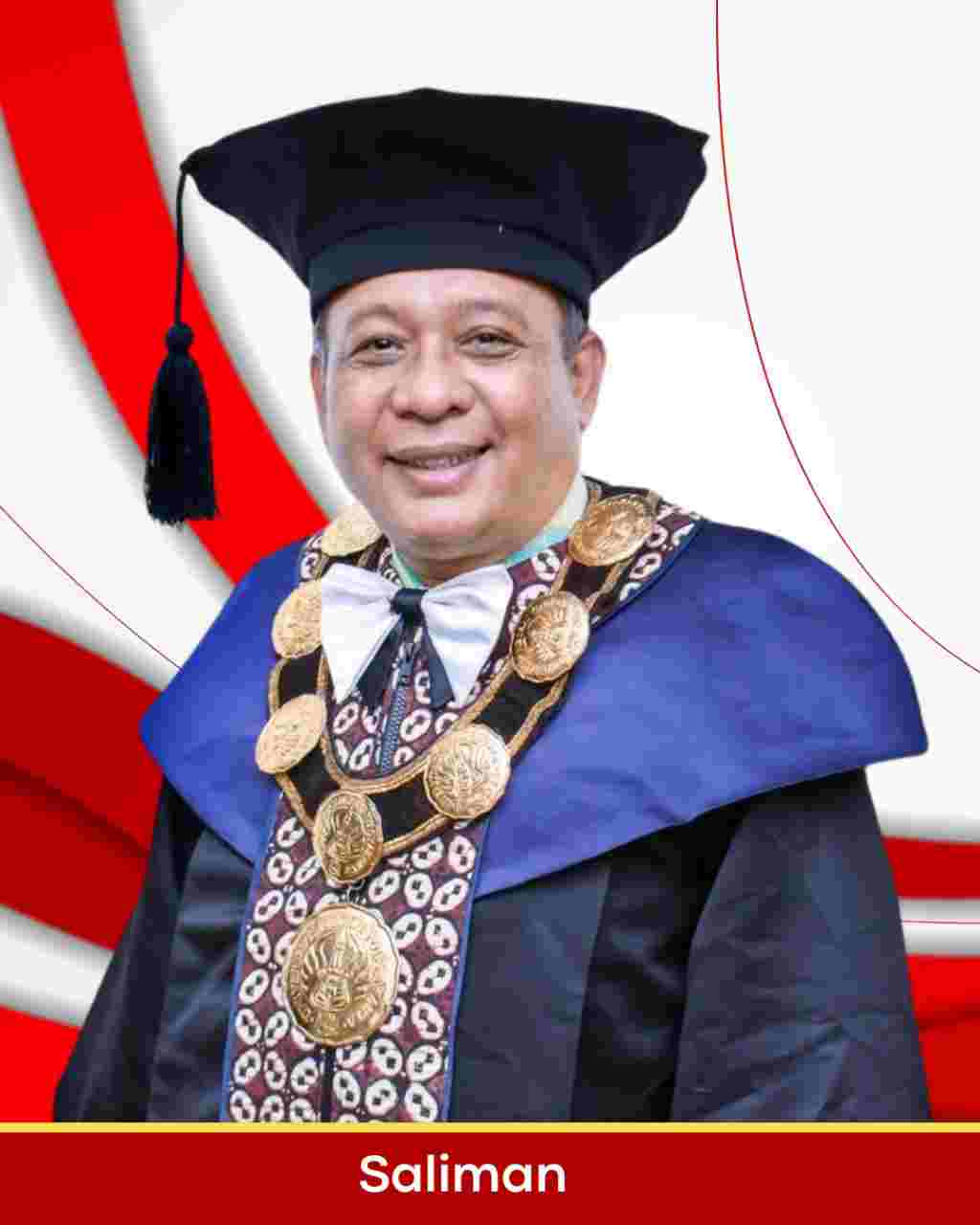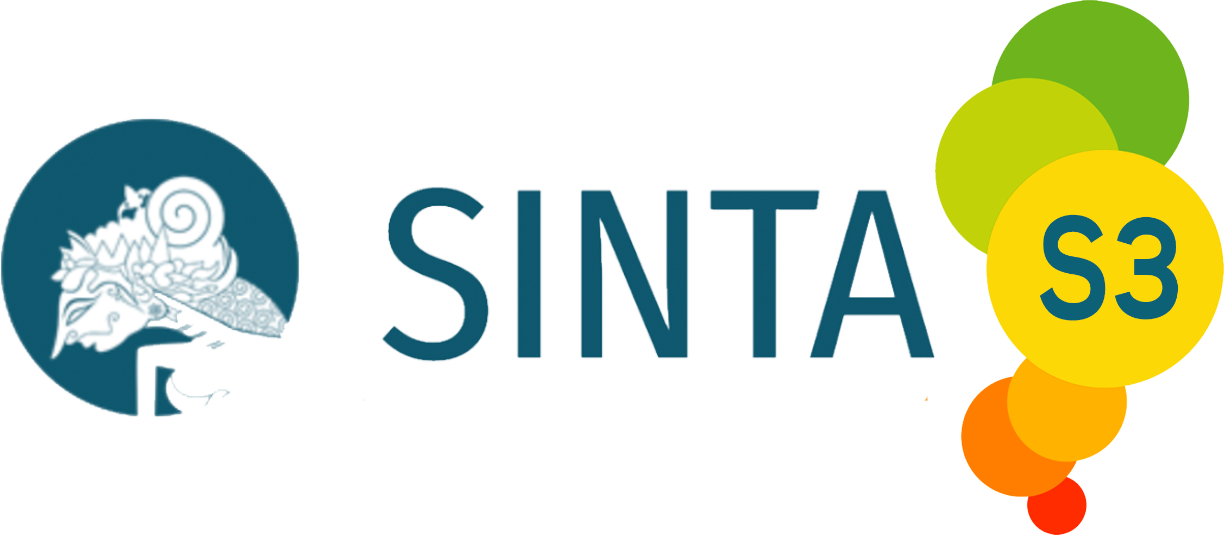PENGEMBANGAN MEDIA PUTAR NUSANTARA PADA MATERI KERAGAMAN PAKAIAN ADAT DI INDONESIA UNTUK KELAS IV SD
DOI:
https://doi.org/10.21831/jipsindo.v7i2.34937Keywords:
Medi play board games, Indonesian customs clothes, Social studies, Elementary schoolAbstract
Penelitian bertujuan untuk menghasilkan media Papan Putar Nusantara pada pembelajaran IPS kelas IV SD Negeri Cijoho dan SDN 2 Kiarajangkung Kecamatan Sukahening, Kabupaten Tasikmalaya. Media Papan Putar Nusantara ini dibutuhkan untuk mengakomodir kebutuhan pembelajaran IPS akan media belajar. Penelitian pengembangan ini menggunakan metode penelitian Design Based Research. Langkah-langkah dalam penelitian ini menggunakan model Reeves dalam Pool & Laubscher, meliputi (1) identifikasi dan analisis masalah oleh peneliti dan praktis secara kolaboratif, (2) mengembangkan solusi yang didasakan patokan teori, design principle yang ada dan inovasi teknologi, (3) melakukan proses berulang untuk menguji dan memperbaiki solusi secara praktisi dan (4) refleksi untuk menghasilkan design principle serta meningkatkan implementasi dari solusi secara praktis. Pengembangan produk divalidasi oleh ahli materi dan ahli media. Teknik pengambilan data pada penelitian ini adalah purposive sampling. Produk media berupa papan putar nusantara adalah papan lingkar yang berputar didalamnya terdapat angka sebagai titik tumpu untuk menentukan hasil dari keterangan pada suatu daerah untuk mengetahui tujuan pembelajaran dengan permainan. Media pembelajaran menjadi faktor untuk meningkatkan pemahaman peserta didik sebagai proses belajar mengajar akan elbih efektif dan menyenangkan sehingga guru membantu mencari pesan dari bahan pembelajaran kepada peserta didik.
THE DEVELOPMENT OF ARCHIPELAGO MEDIA ON DIVERSITY OF TRADITIONAL CLOTHES IN INDONESIA FOR CLASS IV IN ELEMENTARY SCHOOL
This research aims to produce Nusantara Playboard media in social studies class IV SD Negeri Cijoho and SDN 2 Kiarajangkung, Sukahening District, Tasikmalaya Regency. This Nusantara Playboard media is needed to accommodate the social studies learning needs of learning media. This research uses the Design-Based Research research method. The steps in this study use the Reeves model in Pool & Laubscher, including (1) identifying and analyzing problems by researchers and collaboratively practicing, (2) developing solutions based on theoretical standards, existing design principles, and technological innovation, (3) carry out an iterative process to test and improve solutions practically and (4) reflection to produce a design principle and improve the practical implementation of the solution. Product development is validated by material experts and media experts. The data collection technique in this study was purposive sampling. The media product in the form of an archipelago rotary board is a circular board that rotates in which there are numbers as a fulcrum for determining the results of information in an area to determine the objectives of learning with games. Learning media is a factor in increasing students' understanding as the teaching and learning process will be more effective and fun so that teachers help find messages from learning materials to students.
References
Arsyad, A. (2016). Media pembelajaran. Jakarta; PT. Rajagrafindo Persada.
Afandi, R. (2011). Integrasi Pendidikan Karakter Dalam Pembelajaran IPS Di Sekolah Dasar. PEDAGOGIA: Jurnal Pendidikan, 1(1), 85-98. https://doi.org/10.21070/pedagogia.v1i1.32
Dendi, T. S. & Sukirno. Pengembangan Media Pembelajaran IPS Dengan Te,a Pemanfaatan Dan Pelestarian Sungai Untuk Siswa Kelas VII SMP. Harmoni Sosial: Jurnal Pendidikan IPS, 2(2), 116-124. https://doi.org/10.21831/hsjpi.v2i2.7663
Fakih Samlawi dan Bunyamin Maftuh. 1998/1999. Konsep Dasar IPS. Jakarta: Dekdikbud. Ditjen. Pendidikan Tinggi Proyek Pendidikan Guru Sekolah Dasar.
Lidinillah, D. A. M. (2012). Educational Design Research: a Theoretical Framework for Action. Tasikmalaya: Universitas Pendidikan Indonesia - Kampus Tasikmalaya.
Rudy, S. & Hisbiyatul, H. (2017). Media Pembelajaran. Jember: Penerbit Pustaka Abadi
Sapriya. (2009). Pendidikan IPS. Bandung: Rosda Karya.
Sapriya., Istianti, Tuti., & Zulkifli, Effendi.2007. Pengembangan PendidikanIPS SD. Bahan Belajar Mandiri.Bandung: Fakultas Ilmu PendidikanUPI. UPI Press
Setiawati, T., Pranata, O. H., & Halimah, M. (2019). Pengembangan Media Permainan Papan pada Pembelajaran IPS untuk Siswa Kelas V Sekolah Dasar. PEDADIDAKTIKA: Jurnal Ilmiah Pendidikan Guru Sekolah Dasar, 6(1), 163–174.
Sugiyono.(2015). Metode penelitian pendidikan. Bandung: Penerbit Alfabeta.
Susanto, Ahmad. 2014. Pengembangan Pembelajaran IPS Di Sekolah Dasar. Jakarta: Prenada Media Group.
Ool, J., & Laubscher, D. (2016). Design-based research : is this a suitablemethodology for short-term projects ? Educational Media International, 3987(Februari),1(11). https://doi.org/10.1080/09523987.201 6.1189246
Downloads
Published
How to Cite
Issue
Section
Citation Check
License
Authors who publish with this journal agree to the following terms:
- Authors retain copyright and grant the journal right of first publication with the work simultaneously licensed under a Creative Commons Attribution License that allows others to share the work with an acknowledgement of the work's authorship and initial publication in this journal.
- Authors are able to enter into separate, additional contractual arrangements for the non-exclusive distribution of the journal's published version of the work (e.g., post it to an institutional repository or publish it in a book), with an acknowledgement of its initial publication in this journal.
- Authors are permitted and encouraged to post their work online (e.g., in institutional repositories or on their website) prior to and during the submission process, as it can lead to productive exchanges, as well as earlier and greater citation of published work (See The Effect of Open Access).

JIPSINDO (Jurnal Pendidikan Ilmu Pengetahuan Sosial Indonesia) is licensed under a Creative Commons Attribution-ShareAlike 4.0 International License.
Based on a work at https://journal.uny.ac.id/index.php/jipsindo.
















